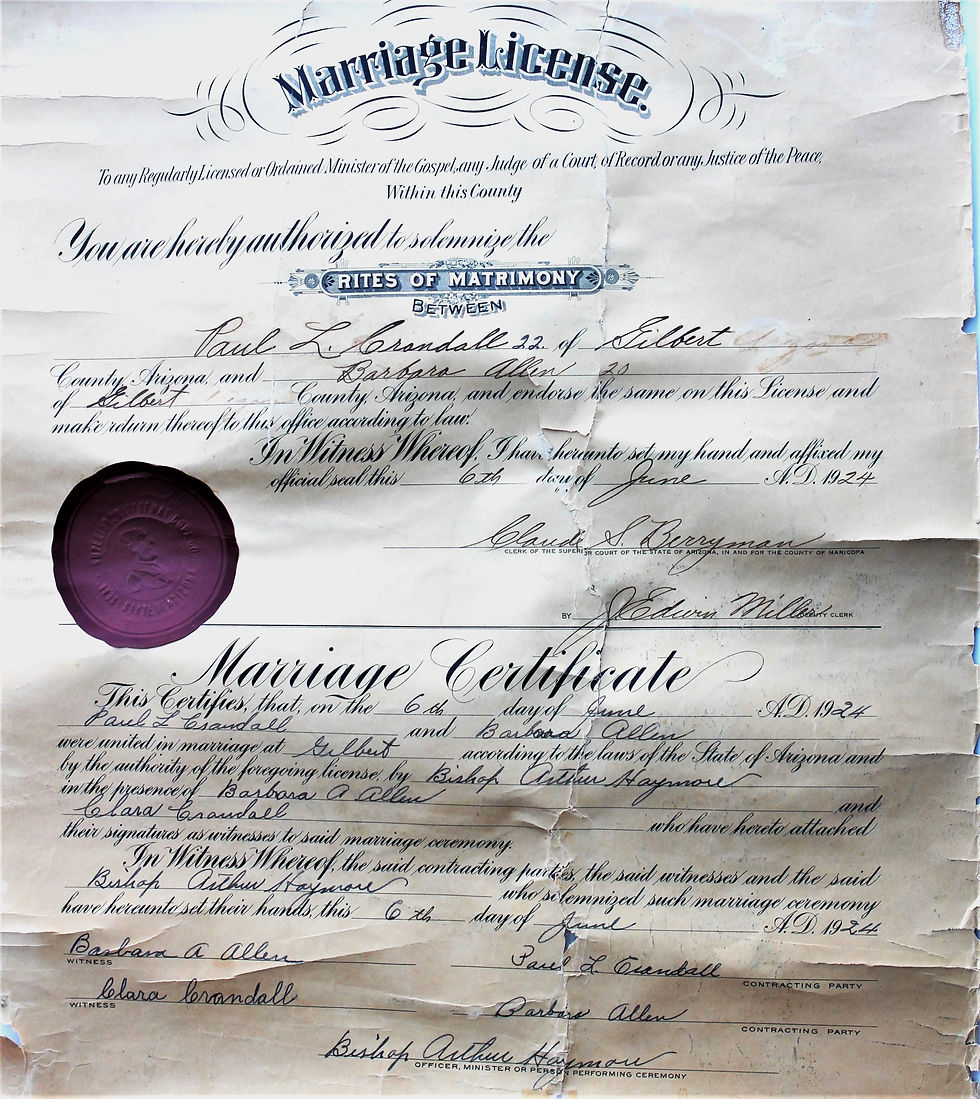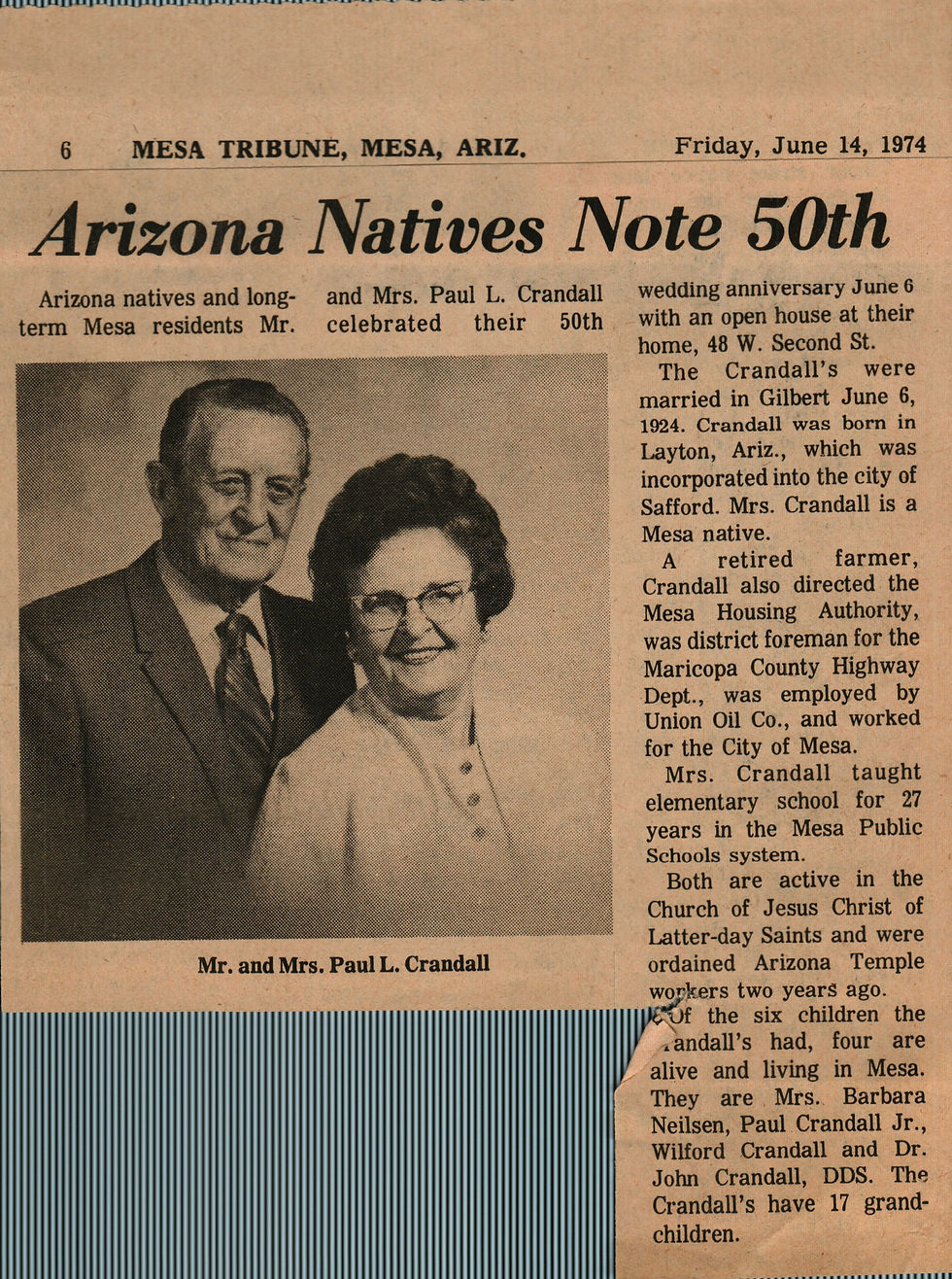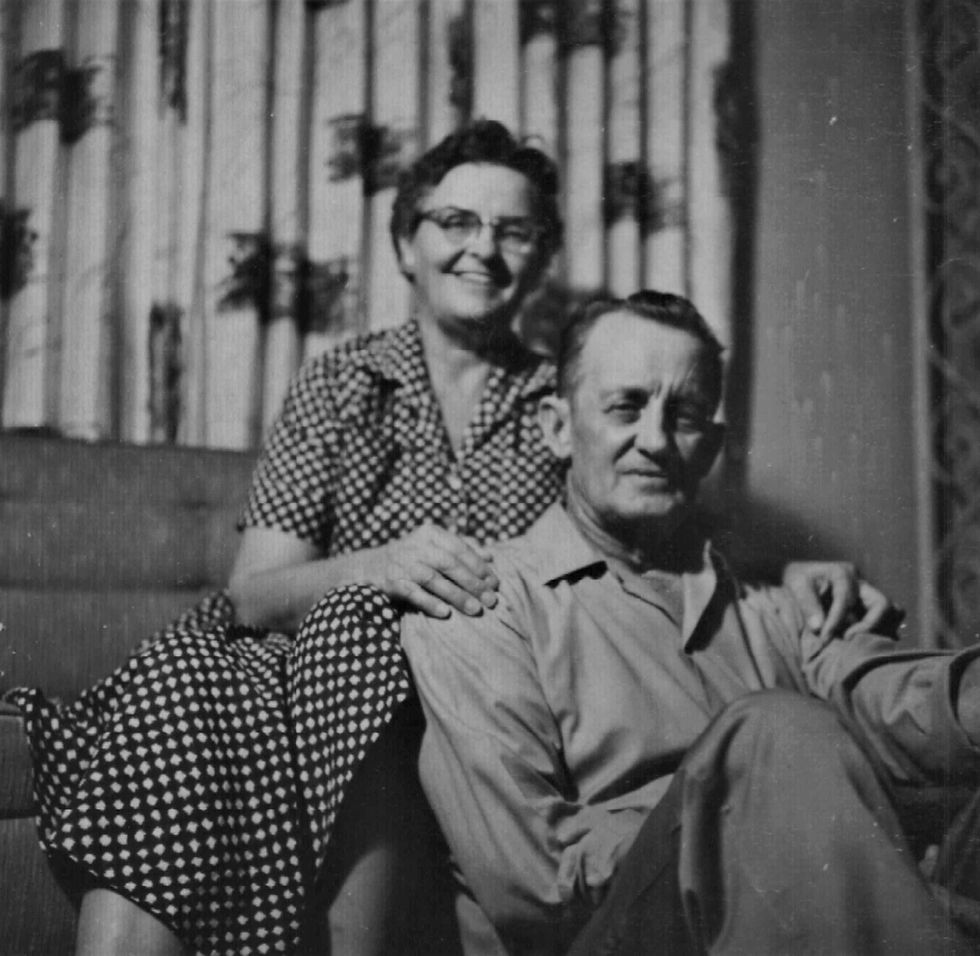The Country Romance of Paul L. Crandall and Barbara Allen
- Kurt Crandall

- Jul 6
- 3 min read
What began as a casual day spent exploring genealogical documents became, quite unexpectedly, a significant one in the Crandall family story. While tracing the lines of my ancestry, I came across a quiet marvel: a scanned copy of a marriage certificate of my great-grandparents, Paul L. Crandall (1901–1987) and Barbara Allen (1903–2003). They were married almost exactly 101 years ago, on June 6, 1924. That date, once just another line in the archives, suddenly resonated with unexpected meaning, a century-old promise rediscovered close to the very day it was first made.

To picture their story is to step into Arizona in the 1920s, a bustling little city where old dirt roads were slowly giving way to new pavement, and buggies were being traded for automobiles. Statehood was still young, granted just over a decade earlier in 1912. The echoes of World War I still lingered with undeveloped demand of Arizona cotton, a major staple of Arizona agriculture. Yet the horizon was bright with promise. The Salt River Valley, once arid and sun-scorched, was coming to life. The completion of the Roosevelt Dam in 1911 was slowly transforming the desert into a patchwork of farmland, using the ancient technology of canals to bring fresh water to fields of crops. Phoenix was still stretching its limbs, and the nearby city of Gilbert, incorporated only in 1920, was just beginning to take root on the back of this agricultural expansion.
It was in this fertile land that Paul and Barbara’s courtship would flourish. Barbara’s family, the Allens, were dairymen, and both of her grandfathers, Hyrum Phelps and Charles Allen were among the first wagon trains that helped settle the Phoenix Valley in 1868. Paul and his family had moved from Safford, Arizona down to the valley in 1917 in search of farming opportunities. His father Myron Crandall bought an alfalfa farm at a time when Gilbert was proudly called the “hay capital of the world.”
As for their courtship, my father likes to tell the story he heard from his grandfather Paul himself. Back then, fashionable romance was conducted in a cart pulled by a horse. Paul would hitch up his horse, pick up a friend, and then the two would ride together to their girlfriends' farms to collect their two dates. On a particular occasion, Paul noticed that he liked his friend's date (Barbara) better than his own date. By evening's end, he had formulated a plan where he dropped off his date at her home first, and then dropped off his friend at his farm next, leaving just Paul and Barbara in the buggy alone. That was the occasion of their first kiss. Those moments, riding beneath the Arizona sky along those dusty farm roads, were where their story truly unfolded.
In time, their courtship turned into serious commitment. On June 12, 1924, The Arizona Republic newspaper reported that “Paul Crandall and Barbara Allen, popular young people of Gilbert, were united in marriage. The ceremony was held on the lovely front lawn of the Howard Millett home, Bishop A. S. Haymore, of the Gilbert ward, officiating.” Shortly after the wedding, the newlyweds embarked on a two-week trip to the Grand Canyon and other points of interest in northern Arizona, notes the article.

Their love endured not just through time, but also through generations. My father recalls, both as a child and adult, sensing the deep affection they held for each other. He says that Grandpa used to say, "It's a good thing there is both chocolate and vanilla. Otherwise, we would all be after your Granny." Fifty years later, the Mesa Tribune wrote of their golden (50th anniversary), that they held an open house in their home to celebrate with family and friends.

What began with horse-drawn rides and front-lawn marriage vows grew into a lifetime of partnership. Now, more than a century later, their story still stirs in the roots of our family tree, a reminder that love can leave a legacy that endures, quietly and completely, through generations.









Comments